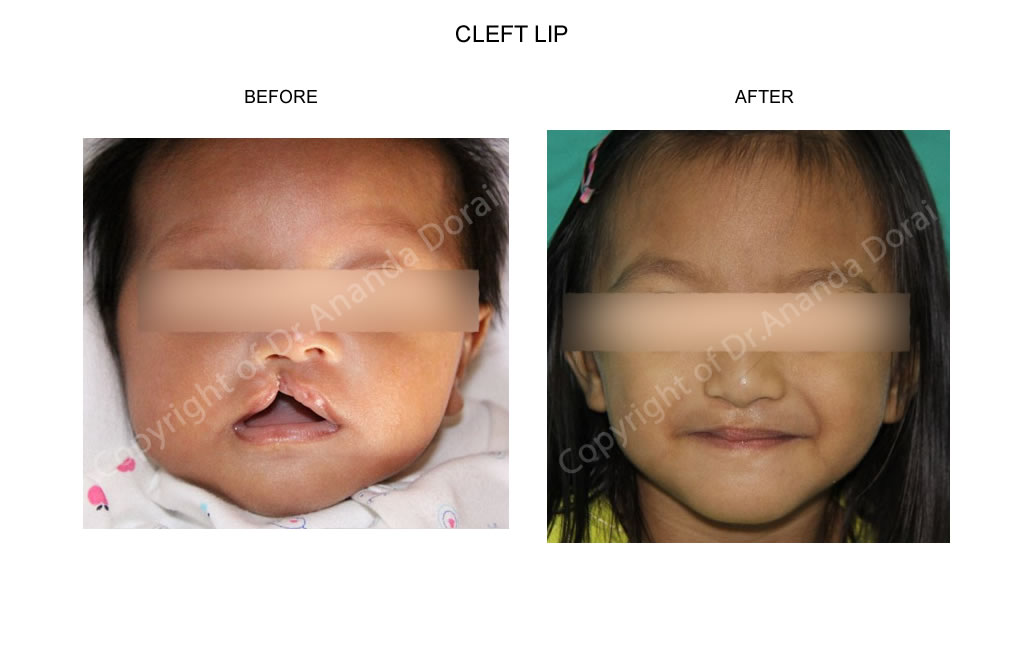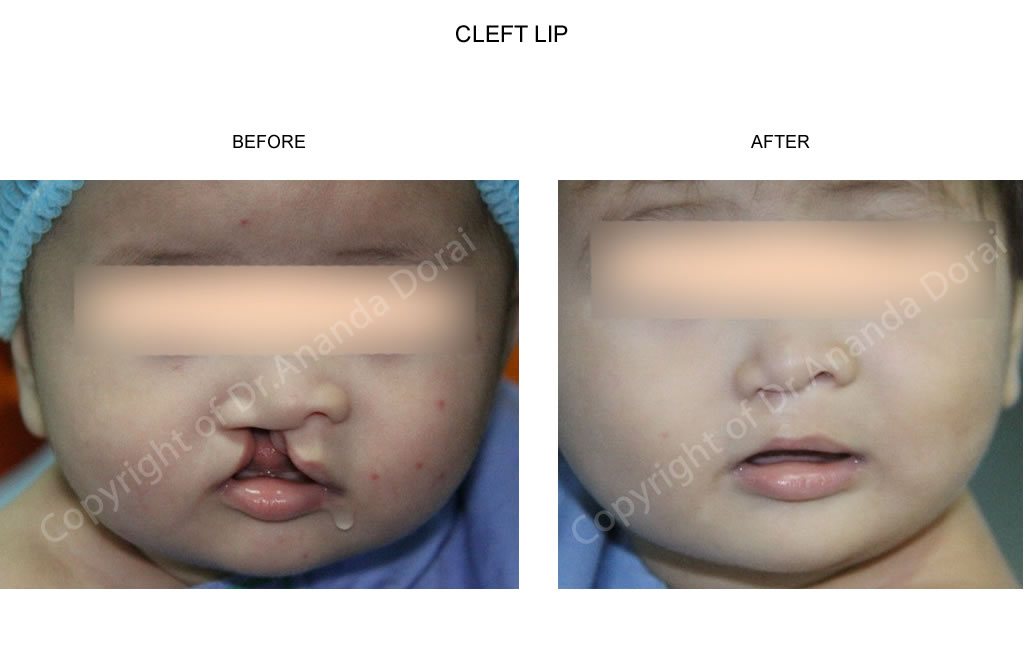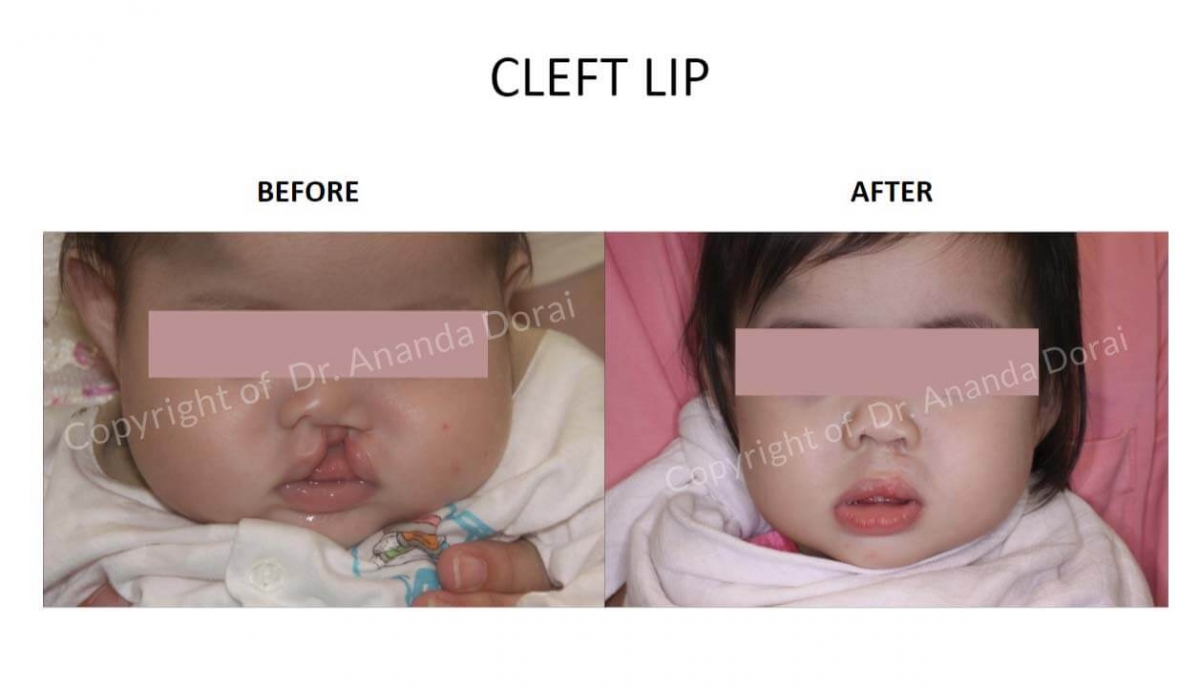What you need to know
Cleft lip and cleft palate are among the most common birth defects affecting children.
The incomplete formation of the upper lip (cleft lip) or roof of the mouth (cleft palate) can occur individually, or both defects may occur together. The conditions can vary in severity and may involve one or both sides of the face.
Cause/Repair
A cleft, or separation of the upper lip and/or the roof of the mouth, occurs very early in the development of your unborn child. During fetal development, certain components of the upper lip and roof of the mouth fail to form normally. Cleft lip and cleft palate repair is a type of plastic surgery to correct this abnormal development both to restore function and to restore a more normal appearance.
Most clefts can be repaired through specialized plastic surgery techniques, improving your child’s ability to eat, speak, hear and breathe, and to restore a more normal appearance and function.
A team of specialists can help
Early intervention by a team of specialists to evaluate your child is essential in cleft lip and/or cleft palate repair. The team can work together to define a course of treatment, including surgical repair of the cleft, speech rehabilitation, and dental restoration.
These specialists may include a:
- Plastic surgeon
- Pediatrician
- Pediatric dentist
- Otolaryngologist (ear, nose, and throat specialist)
- Auditory or hearing specialist
- Speech pathologist
- Genetic counselor
- Social worker
More than a cosmetic repair
Surgery to repair a cleft of any kind is a highly individualized procedure that’s intended to not only close the defect but also to ensure your child’s ability to function and grow normally.
Cleft lip repair, also called cheiloplasty, includes reconstruction of a more normal appearance, namely:
- Closure of the cleft resulting in a scar located in the normal structures of the upper lip
- Formation of a cupid’s bow (the curve at the center of the upper lip)
- Considerations for adequate distance between the upper lip and nose
Because the palate creates the floor of the nasal cavity, considerations in repairing a cleft palate include:
- for normal growth, function and speech wwwelopment
- Relation of the palate to the auditory canal and hearing
- Development of the teeth and jaw alignment
Where the cleft also affects the shape of the nose, additional procedures may be recommended to:
- Achieve symmetry between the nostrils
- Create adequate length of the columella (the tissue that separates the nostrils)
- Increase the angle of the nasal tip, to avoid a flattened nasal tip or one that pulls downward
When should my child have the surgery?
The timing of the cleft repairs depends on the individual circumstances of your child.
Cleft lip repairs are initially performed when a child is at least 10 weeks of age and 10 pounds in weight and has a hemoglobin (or blood count) of at least 10.
Cleft palate repairs are generally performed when a child is somewhat older, from 9 to 18 months of age.
Cleft repair may be delayed in order to treat other, more life-threatening problems that may be present such as a heart or lung disorder.
What happens during cleft lip and palate surgery?
Step 1 –Anesthesia
Medications are administered for your child’s comfort during the surgical procedures. The choices include intravenous sedation and general anesthesia. Your doctor will recommend the best choice for your child.
Step 2 – The incision
The goal of cleft lip surgery is to close the separation in the lip and to provide a more normal function, structure, and appearance to the upper lip. Incisions are made on either side of the cleft to create flaps of tissue that are then drawn together and stitched to close the cleft.
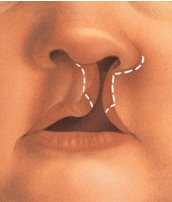
The repair of a cleft palate requires careful repositioning of tissue and muscles to close the cleft and rebuild the roof of the mouth. Incisions are made on either side of the cleft and specialized flap techniques are used to reposition muscle and the hard and soft components of the palate. The repair is then stitched closed, generally at the midline of the roof of the mouth, providing enough length of the palate to allow for normal feeding and speech development, and continued growth throughout life.
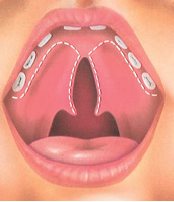
Step 3 – Closing the incisions
Cleft lip and palate incisions can be closed with removable or absorbable sutures.
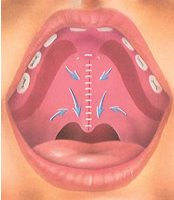
It is important to understand that while a cleft may be surgically repaired in a single plastic surgery procedure, treating a child born with a cleft continues through adolescence and sometimes even adulthood. As a child grows, secondary plastic surgery procedures to improve function and appearance may be required.
Step 4 – See the results
The resulting external scars of a cleft repair are generally positioned in the normal contours of the upper lip and nose. Over time, these will fade and your child’s ability to grow and function normally will continue to improve.
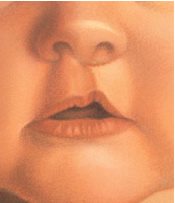
Your child’s recovery and results
After surgery, dressings or bandages may be placed on incisions outside your child’s mouth.
You will be given specific instructions that may include: How to care for the surgical site following surgery, medications to apply or take orally to aid healing and reduce the risk of infection, specific concerns to look for at the general health of your child, and when to follow-up with your plastic surgeon.
Your plastic surgeon or the attending staff will instruct you on feeding your child and as well as any restrictions or special activity instructions.
Don’t be surprised if you find that arm restraints have been placed on your child in recovery. They will prevent him or her from injuring the surgical site as it heals. Restraints may be removed several times as day, so long as your child is supervised and prevented from touching the surgical site or sucking a thumb.
Your child’s discomfort can be controlled with pain medication. If necessary, sutures will be removed following surgery. Healing will continue for several weeks as swelling resolves.
After surgery, diligent sun protection is essential to prevent the formation of irregular scars
Results and outlook
The outcome of your child’s initial cleft lip and/or cleft palate repair will make a vast difference in his or her quality of life, ability to breathe, eat and speak. However, secondary procedures may be needed for functional reasons or to refine appearance. Even though the scars of a cleft lip repair are generally located within the normal contours of the face, they will always be visible.
Before & After Photos
